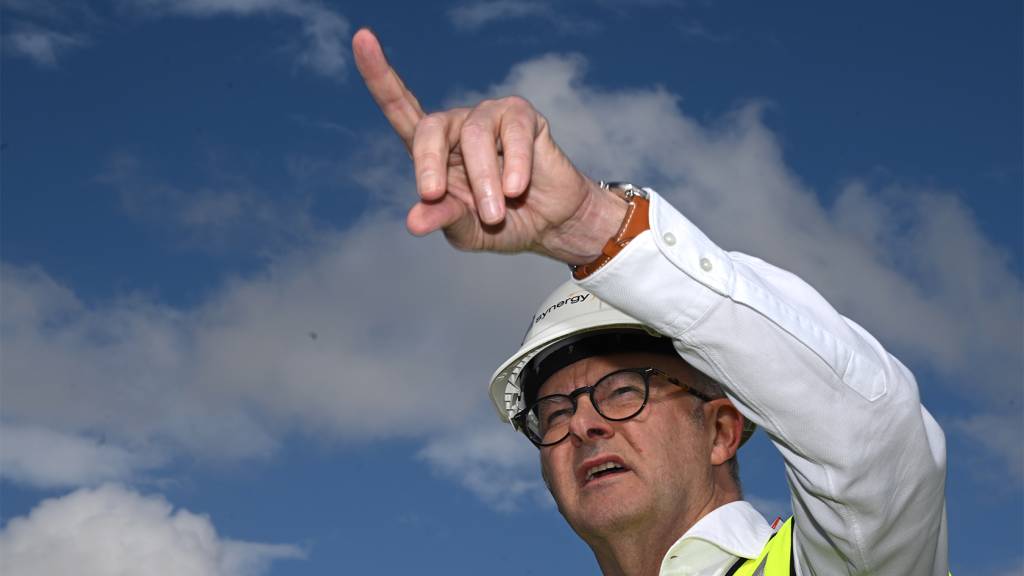By Bernard Keane
Copyright crikey

Back in the Scott Morrison years, the Liberal leadership created a false narrative around the climate crisis: that Morrison was engaging in brave political leadership to convince his party and the Nationals to sign up to a target of net-zero emissions by 2050.
It was a laughably insufficient target given rapidly accelerating global heating. Morrison couldn’t even explain how it would be reached, with 15% of the reduction left to “further technology breakthroughs“. But the press gallery breathlessly recounted each twist and turn as Morrison boldly persuaded the Liberals and recalcitrant Nationals to sign up.
Now, in the nature of these things, the current iteration of the Coalition doesn’t even support net zero. Indeed, not merely does the Coalition not back net zero, but it also doesn’t back Tony Abbott’s risible 2030 emissions abatement targets made in 2015, nor John Howard’s plan for a comprehensive emissions trading scheme announced in 2007. Being worse than that trio on climate is an impressive achievement.
Labor was evidently watching closely, because it has pursued a similar strategy on climate action.
To read the press, the government has been torn between greater and lesser ambition on a 2035 climate target — the target it should have announced months ago, but which was hampered by Labor’s fear that Peter Dutton would use it against them.
The apparent to-ing and fro-ing was expectations management: Labor has unveiled a target closer to pathetic than unambitious — 62% to 70% below 2005 levels. But like Morrison’s net zero, the target will be a distraction designed to foster the image of climate action while Labor gets on with doing its best to accelerate global heating.
The 62-70% target will only relate to a relatively small proportion of Australia’s emissions — those produced domestically. Australia’s carbon dioxide output is far more massive than what we use here. According to a 2023 report by Climate Analytics, in 2022 Australia’s domestic carbon emissions were around 1% of global emissions — but we provide around 4.5% of global emissions via our fossil fuel exports. The target Labor is announcing today applies to just over 20% of our emissions. The other nearly 80% are exported.
Labor’s line on that — the same line as previous governments — is that what other countries do with our fossil fuels is a matter for them. The problem with what might be called the gun manufacturer’s defence is that, sadly for Australia, what other countries do with our fossil fuels very much is a matter for us. The chapter and verse of this we had earlier this week in the national climate risk assessment report. It’s a policy contradiction to warn about the impacts of the climate crisis on the one hand, and to continue to fuel the climate crisis with coal and gas exports on the other.
The government is failing to do anything about those exports while also ramping them up by approving more fossil fuel projects. According to data gathered by the Climate Council, just this year, the government has approved four major projects that over their lifetimes will produce 4.14 billion tonnes of CO2-equivalent emissions. That’s on top of the 27 projects that Labor approved in its first term, with a total lifetime emissions output of around 15 times our total annual domestic emissions.
In that context, 62% by 2035 is small beer. And don’t forget the government is subsidising further fossil fuel exploration.
Labor isn’t the only one in denial about our exported emissions. Earlier this year, the Business Council — which has spent 15 years sabotaging climate action on behalf of its big business membership — circulated a draft of its recent call for a lowball 2035 target, “Australia 2035 – Maximising Our Potential“. (The BCA is clearly running out of inspiration for its endless torrent of reports: this is the second time in a decade it has trotted out the “potential” line.)
In an earlier draft of the BCA report, seen by Crikey, it admitted that “Australia’s domestic emissions are just under 1% of world emissions and the emissions embodied in our coal and gas exports represent an additional 2 per cent of world emissions”. But in the final version, that admission had been removed — indeed, there was no reference at all to our coal and gas exports, except regarding how they might be affected by the world moving faster than forecast to cut emissions.
Instead, the BCA preferred to talk about all the “competitive green exports” we’re about to achieve. Like the government, the BCA wants to focus on the fantasy of being a “renewable energy superpower” rather than the reality of being a fossil fuel superpower.
And — as with the government’s emissions abatement policies it will announce today — nowhere within it will you see any reference to the one mechanism that could deliver serious emissions abatement targets at the lowest cost and with the greatest efficiency: a carbon price.
It’s hard to believe that just a couple of weeks ago, the BCA was at a roundtable in Canberra urging the government to do all it could to lift Australia’s flagging productivity performance. But business is only interested in productivity when it serves its profits, not the broader economy or the national interest.



